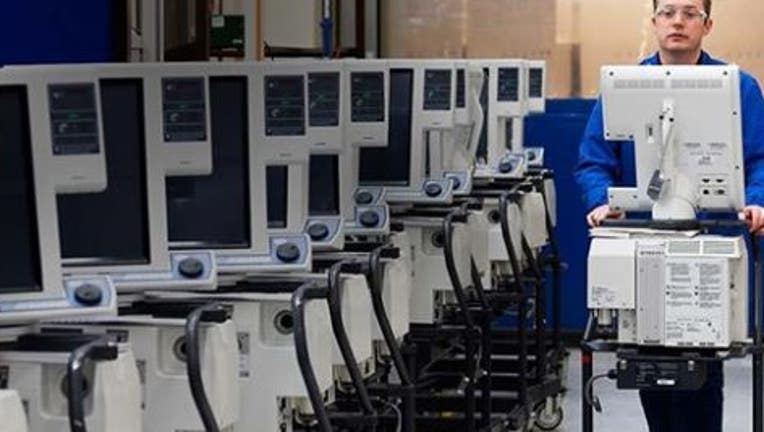Medtronic makes ventilator design specifications public to help increase manufacturing worldwide

Medtronic has open sourced the design of these ventilators to help combat the COVID-19 crisis. (Medtronic/Facebook)
(FOX 9) - Medtronic has made the design specifications for its ventilator public in an effort to increase ventilator manufacturing during the COVID-19 pandemic.
The Dublin, Ireland-based medical technology company made the announcement Monday which is says should “enable participants across industries to evaluate options for rapid ventilator manufacturing to help doctors and patients dealing with COVID-19.”

Medtronic ramps up ventilator production to meet global demand
Private companies like Minnesota's Medtronic are boosting production in order to build equipment to fight COVID-19.
Medtronic says the decision to open source the design of the Puritan Bennett 560 ventilator is consistent with FDA guidance.
The manuals, design requirement documents, manufacturing documents and schematics can be found at Medtronic.com/openventilator.
Last week, Medtronic announced it was ramping up its own production of the ventilators, too. It expects to double its production.
The company has boosted production to 24 hours a day, seven days a week. At its facility in Ireland, Clark says Medtronic can make 225 ventilators a week, which the company hopes to increase to more than 500 ventilators a week.
The company describes the ventilator as “compact, lightweight and portable ventilator” that can be used by both adults and children. It can be used both in clinical settings and in homes, according to Medtronic.
“Medtronic recognizes the acute need for ventilators as life-saving devices in the management of COVID-19 infections. We know this global crisis needs a global response. Over the past few weeks, we have ramped up production of our Puritan Bennett™ 980 ventilators. But we also know we can do more, and we are,” said Bob White, executive vice president and president of the Minimally Invasive Therapies Group at Medtronic. “By openly sharing the PB 560 design information, we hope to increase global production of ventilator solutions for the fight against COVID-19.”
Ventilators are important to treating COVID-19, which is a virus that leads to severe respiratory illness. When a patient is placed on a ventilator, the patient’s lungs can recover while the ventilator performs the breathing function for the person.

